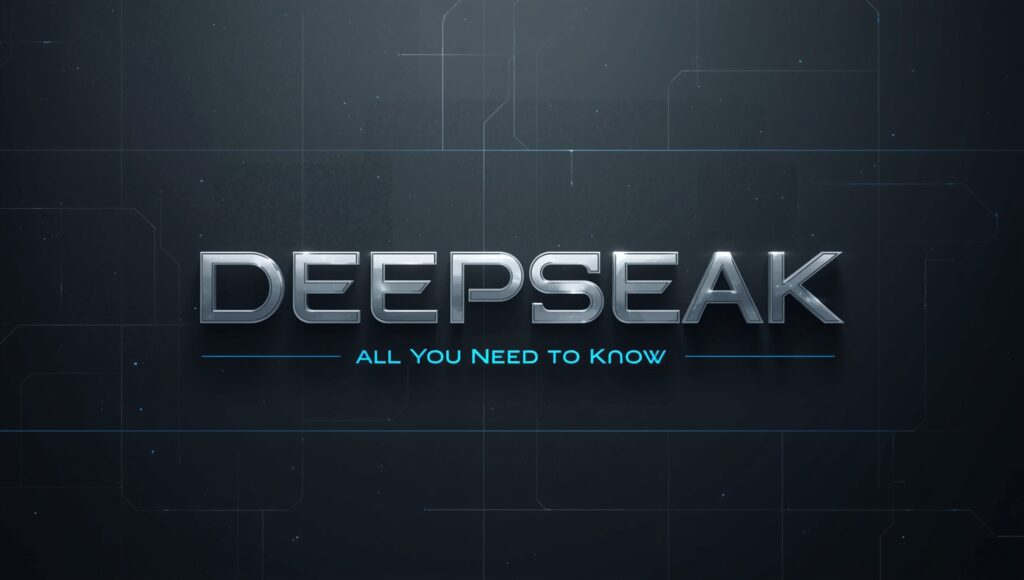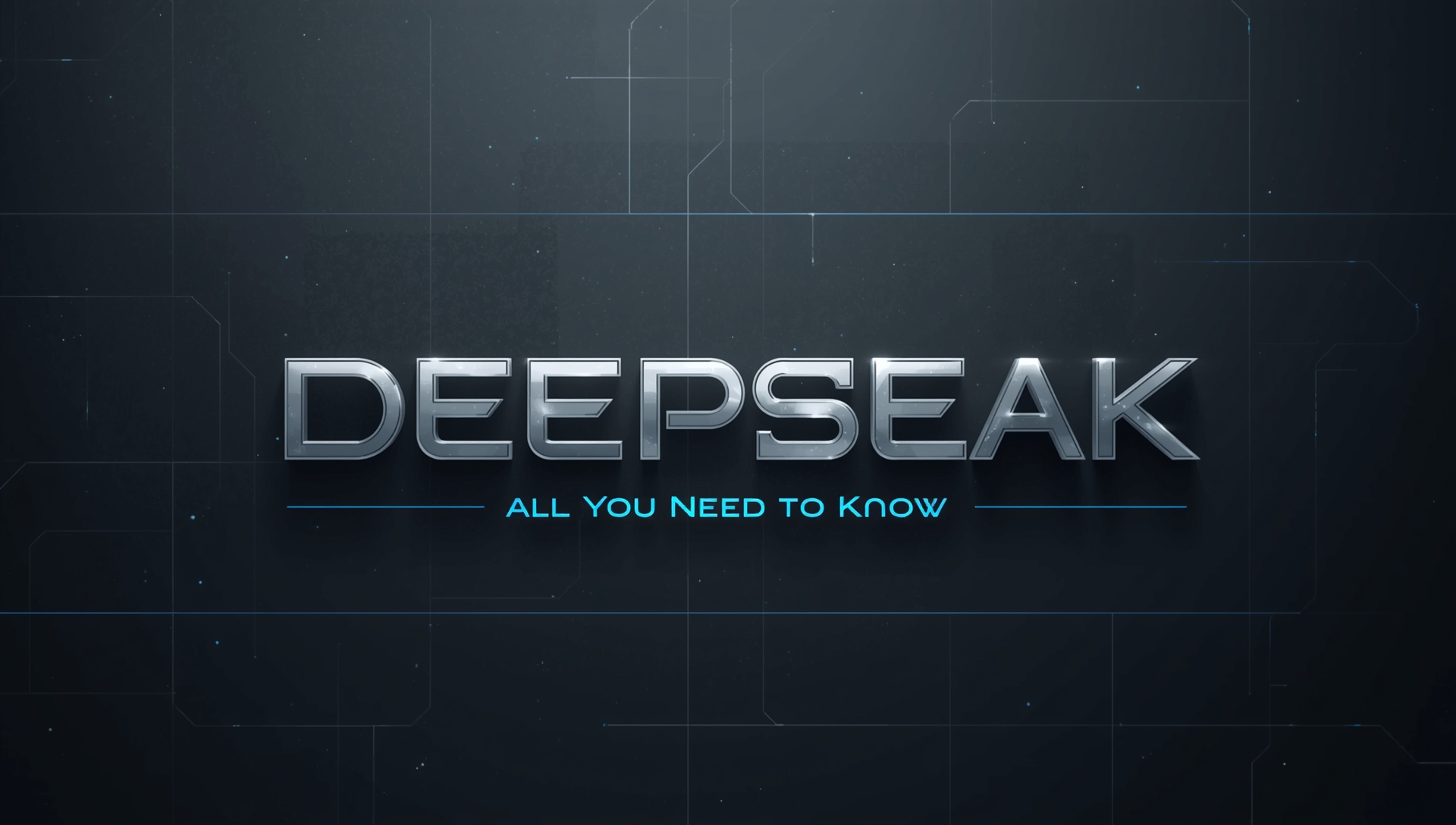Artificial Intelligence (AI) is reshaping industries, societies, and economies at an unprecedented pace. For years, the spotlight has been on Western giants like OpenAI, Google DeepMind, and Anthropic. However, a surprising new contender from China has recently disrupted this global landscape—DeepSeek.
Within a short time, DeepSeek has gone from being an unknown startup to a global headline-maker. Its R1 model stunned the industry by outperforming expectations, reaching millions of users, and even shaking global stock markets. But what exactly is DeepSeek, how does it work, and why is it so controversial?
This guide explores everything you need to know—from its background and technology to its strengths, risks, and global impact.
Background and Origins
DeepSeek is a Chinese artificial intelligence startup founded in July 2023 in Hangzhou. The company was established by Liang Wenfeng, a co-founder of the hedge fund High-Flyer. From the beginning, its mission was ambitious: to build cutting-edge AI systems that rival Western leaders but at a fraction of the cost.
China has long aimed to achieve AI self-sufficiency and compete globally in this strategic sector. DeepSeek is part of a group of fast-growing AI ventures often referred to as the “Six Little Dragons”—a term for startups challenging established tech giants.
By combining efficient engineering, lower costs, and an open-source philosophy, DeepSeek positioned itself as a serious alternative to dominant players like OpenAI.

Breakthrough Models
DeepSeek has released several AI models that captured global attention.
R1 – The Game Changer
Launched in January 2025, the R1 model quickly rose to the top of the U.S. iOS App Store as the most downloaded free app. Its popularity was driven by several factors:
- Open weights: Unlike closed systems, R1’s model weights were made publicly available under the MIT license.
- Cost efficiency: Training R1 reportedly cost only $5.6 million, compared to over $100 million for GPT-4.
- Strong reasoning: R1 demonstrated impressive results on reasoning and problem-solving benchmarks, putting it on par with advanced Western models.
V3 – Scaling with Mixture-of-Experts
DeepSeek later unveiled V3, a massive 671 billion-parameter mixture-of-experts (MoE) model. Instead of activating all parameters simultaneously, MoE selectively uses subsets of the model, making it far more efficient while maintaining power.
Coder Models – Specialized for Development
DeepSeek also introduced Coder models tailored for programming tasks. These models excel at:
- Writing and debugging code
- Handling multi-file and long-context projects
- Supporting over 300 programming languages
In coding benchmarks, these models outperformed even GPT-4 Turbo, making them highly attractive for software developers.
Strengths and Advantages
Several qualities set DeepSeek apart from competitors:
- Cost-effectiveness – Its models are trained with significantly less financial investment, lowering the barrier for AI development.
- Openness – By releasing weights and encouraging public research, it has gained strong support from the developer community.
- Performance – From reasoning to coding, benchmarks show its models can rival, and sometimes surpass, leading Western AIs.
- Adoption speed – Within weeks of release, millions of users downloaded and actively used its chatbot app.
This combination of affordability and openness makes DeepSeek a true disruptor in the AI industry.
Real-World Applications
DeepSeek’s models are already being applied across multiple sectors:
- Personal Assistants – Users engage with chatbots for tasks such as drafting emails, brainstorming, and answering complex queries.
- Software Development – Developers leverage Coder models to generate, optimize, and debug code efficiently.
- Healthcare and Research – Early tests show strong results on medical and academic benchmarks like the USMLE and math competitions.
- Education – Students and researchers use its reasoning models for problem-solving and learning support.
- Multimodal AI – The company is expanding into models that combine text, vision, and potentially audio for broader applications.
Risks and Controversies
Despite its success, DeepSeek faces significant criticism and scrutiny.
Privacy and Security Concerns
Because the company is based in mainland China, governments and experts worry about data privacy. Under Chinese law, authorities can compel companies to share information, raising alarms in the U.S. and Europe.
Censorship Issues
Like many Chinese platforms, the models avoid politically sensitive topics such as Tiananmen Square or the Uyghur issue. Critics argue this introduces bias and censorship into the AI.
Reliability Problems
Audits revealed high error rates in news and factual queries. One study found that in 83% of cases, answers were not grounded in reliable sources.
Cybersecurity Vulnerabilities
Reports have highlighted weaknesses, including jailbreak exploits and database exposures, leading to doubts about safety in enterprise environments.
Regulatory Bans
Some countries, including Australia, Italy, South Korea, and the U.S. (for government devices), have restricted or banned the use of DeepSeek models due to national security concerns.
Global Impact
DeepSeek’s sudden rise has had profound consequences worldwide.
- Market Disruption – U.S. tech stocks, including Nvidia, experienced massive losses as investors feared cheaper AI would reduce demand for high-end GPUs.
- Geopolitical Shock – Analysts called it a “Sputnik moment,” warning that China may have gained an edge in the global AI race.
- National Pride in China – The company’s achievements have been celebrated domestically as proof of China’s growing technological independence.
- Challenges with Hardware – Efforts to train future models on Chinese-made Huawei chips caused delays, underscoring ongoing struggles with hardware self-reliance.
The Road Ahead
DeepSeek’s journey is only beginning. With new models in development and global adoption accelerating, the company is poised to remain a central figure in the AI race.
However, its future depends on balancing innovation with trust. Questions about censorship, data safety, and geopolitical tensions will determine whether DeepSeek becomes a long-term rival to OpenAI and Google—or remains a controversial experiment.
Conclusion
So, what is DeepSeek? It is a bold Chinese startup that has shaken the AI industry with open-source, cost-efficient, and high-performing models. Its R1 model made global headlines, while specialized coding and reasoning tools show strong potential.
Yet, its rise also raises serious questions about privacy, censorship, and global competition. DeepSeek is not just another AI company—it represents a pivotal shift in the technological balance of power.
As AI continues to shape the future, DeepSeek’s story reminds us that innovation comes with both opportunities and risks. Whether it becomes a trusted global tool or a politically constrained powerhouse remains to be seen.


